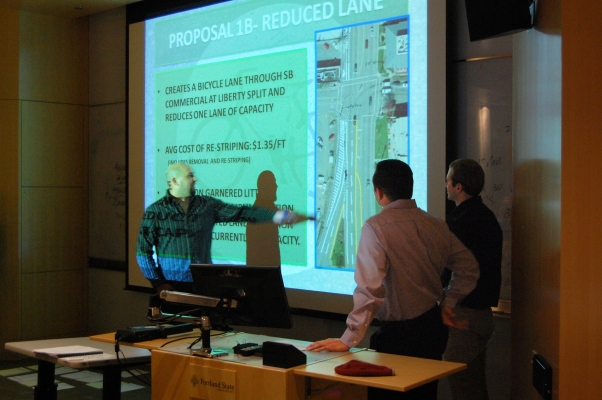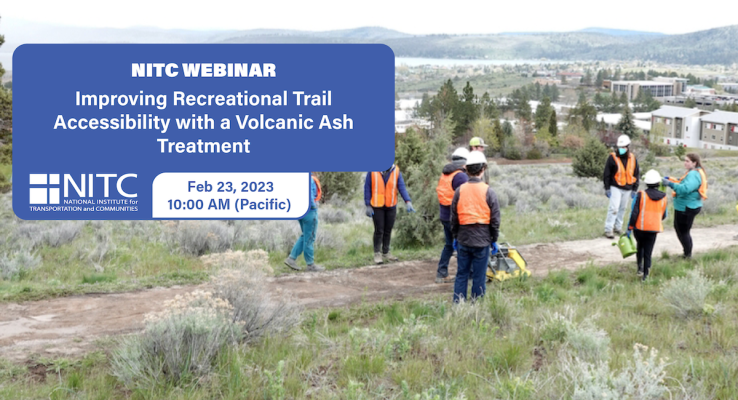Portland State University transportation engineering students added their expertise to a yearlong effort to help Salem reinvent itself. The Urban Transportation Systems class looked at options to improve bicycle and pedestrian travel in the city’s downtown core.
The effort is part of the Sustainable Cities Initiative, one of three OTREC-funded initiatives. The initiative, led by co-directors Marc Schlossberg and Nico Larco at the University of Oregon, chooses one Oregon city per year to make its classroom, directing coursework to help the city adopt sustainable practices.
This year is the first to include Portland State University’s participation. Students in assistant Professor Chris Monsere’s Civil Engineering 454 class gave presentations Nov. 29 and Dec. 1 on several alternatives to improve bicycle and pedestrian transportation and safety. Projects included:
- Accommodating the bicycle and pedestrian crossing on Union Street at Commercial Street while considering impacts to automobile traffic
- Connecting cyclists and pedestrians at the end of the Union Street path at Wallace Road
- A bicycle and pedestrian route west of Wallace Road
- Converting selected one-way streets to two-way operation
- Traffic analysis of options drafted by bicycle advocates for the intersection of Commercial and Liberty streets at Vista Avenue ...


